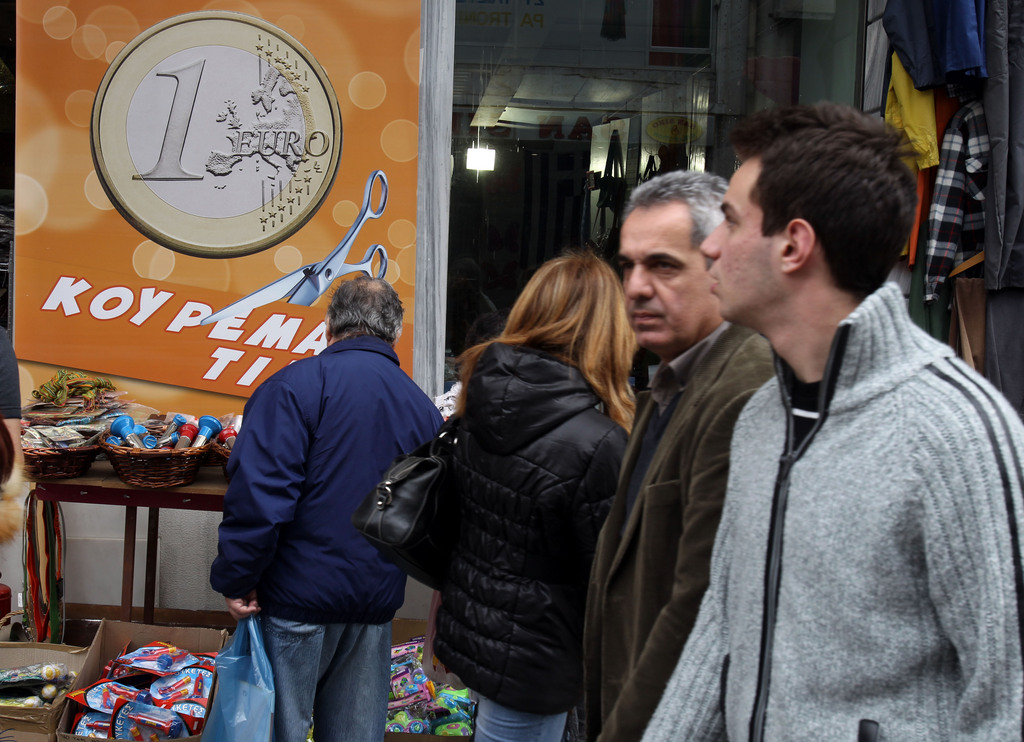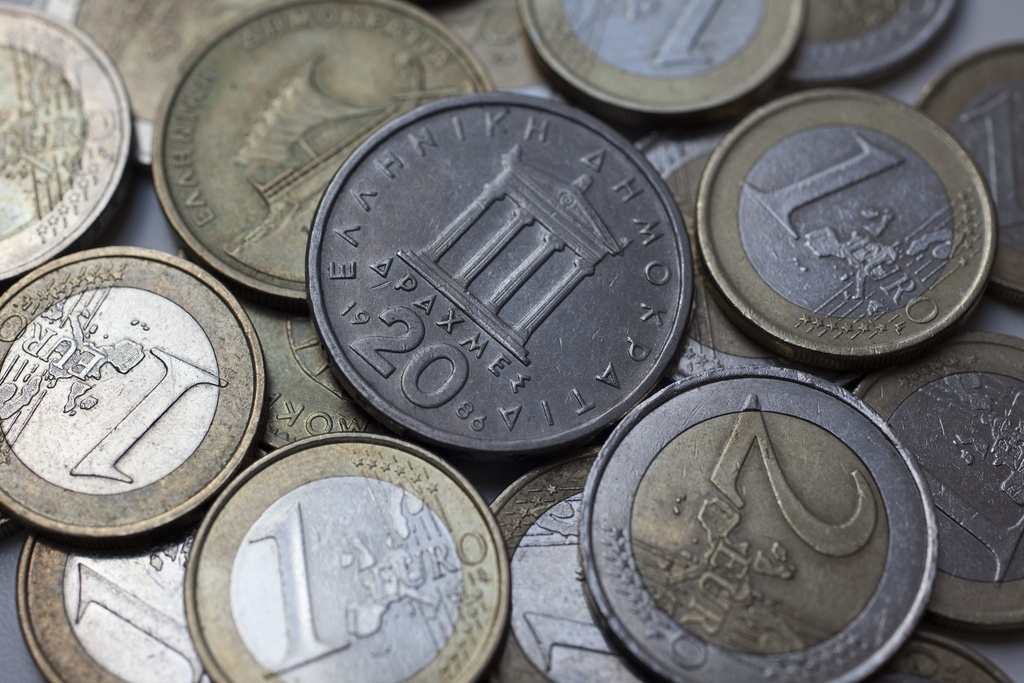Franc faces return to unwanted “safe haven” tag

With the countdown to the Greek general elections ticking down, investors are scrambling to find safe havens for their assets while countries, including Switzerland, are trying desperately to put them off.
A Greek exit from the euro and the spread of panic to other debt-ridden countries threatens to turn the franc once again into a magnet for foreign investors.
Having successfully taken the franc off the list of global safe havens with its SFr1.20 exchange rate floor against the euro last September, the Swiss National Bank (SNB) is now worried that this measure might not be enough on its own.
Last year’s action quickly put an end to speculators piling into the franc to make a quick buck from its relentless appreciation. Barring a minor blip on Easter weekend, the SNB has so far been able to defend its valuation of the franc without the kind of massive spending that threw the central bank into the red in 2010.
But the uncertainty about whether Greece will remain in the euro and the heightened fear of debt troubles in Spain and Portugal has reportedly stung the SNB into action again in recent weeks.
The central bank is starting to mutter about other – as yet undefined – measures to curb foreign asset inflows. These could include imposing a tax on foreign investments coming in to Switzerland.
Changing options
In times of economic and financial strife, investors inevitably seek to transfer funds to less volatile currencies, happy to accept lower returns to protect their principal capital from shrinking.
The Swiss franc is one of a number of global safe haven currencies that has been attracting unwanted volumes of foreign investments since the start of the financial crisis. The problem is that such massive inflows distort the valuation of currencies, play havoc with exchange rates and with the price of exported goods.
Finding a dependable safe haven in the last few months has been a tricky task for investors, with other countries trying their hardest to make themselves unattractive locations.
At the tail end of last year, Japan pumped a massive 10 trillion yen (SFr120 billion, $126 billion) into the markets, diluting the value of its currency.
Interest has also turned to the Swedish Krona and the Norwegian Krone, but fears of insufficient liquidity in Sweden and a succession of interest rate cuts in Norway have deterred a wholesale shift in assets to those countries.
On the other side of the world, the jury is still out on whether the Australian dollar can emerge as a sustainable new safe haven currency. Recent declines of the Aussie currency against the American dollar have added fuel to the “no” camp.
Greenback revival
Signs of a sustained US economic recovery have strengthened the dollar against most major currencies in recent weeks. The US greenback has traditionally been the biggest safe haven currency in times of volatility.
The financial crisis and housing price collapse and a series of quantitative easing programmes in the US initially put paid to the dollar’s safe haven status, but investor confidence has picked up recently.
Closer to home, assets from southern European countries have in recent months been seen pouring into German and Dutch bonds, London real estate and the British pound.
Bonds in economically stable countries are “the classic asset class in times of recession”, according to Julius Bär bank currency specialist David Kohl.
Germany’s opposition to further underwriting Greek debt has also added to the country’s attractiveness as a euro denominated safe haven, according to UBS wealth management chief economist Daniel Kalt.
As long as German Chancellor Angela Merkel holds out against eurobonds the German bond will continue to attract assets, he argued.
“If Germany ever does agree to bear more of southern Europe’s debt burden then one of the biggest safe haven asset markets in Europe will be gone,” Kalt told swissinfo.ch.
Haven again?
David Kohl believes the British pound may enjoy only a limited status as an attractive investment. “The pound has some aspects of a safe haven currency, but it is probably more a case of valuation,” he told swissinfo.ch.
“The pound has been undervalued for a long time, but the story is probably over now.”
With the number and identity of safe havens shifting all the time, some observers fear that the Swiss franc might be due for another dose of appreciation pressure despite the SNB’s determination to stop that from happening.
Investors have drawn out tens of billions of euros from Greece over the last two years, taking these assets to Switzerland and a range of other countries, including nearby Cyprus.
Switzerland has so far been able to absorb these inflows but the fear is that a Greek exit from the euro could lead to bank runs that could be mirrored in Spain, Portugal or even Italy if panic spreads.
Under these circumstances, the Swiss franc could turn into an irresistible safe haven magnet once again despite the country’s efforts to prevent this from happening.
The Swiss franc is a so-called “safe haven” currency, which means that investors and speculators buy it when other currencies, including the euro and the dollar, are under pressure.
A safe haven currency is backed by a robust economy, a stable political framework and enough liquidity to deal with strong bouts of international trading.
Neutral Switzerland, with its conservative economic policy and a strong financial sector, has been a classic safe haven for many years, especially during the two world wars.
The Swiss National Bank has emphasised that it does not pursue an exchange rate target, but consistently bases its monetary policy on its legal mandate.
This mandate stipulates that “the SNB is required to ensure price stability, while taking due account of economic developments”.
Starting in March 2009 the SNB intervened in currency markets. But after pumping in 15 per cent of GDP in May 2010 to little effect as the Swiss franc surged during the first round of the Greek debt crisis, it dropped the plan June 2010.
These forays led it to a loss of SFr21 billion in 2010, its biggest ever, and its then chairman, Philipp Hildebrand, faced calls to resign.
Facing intense pressure from politicians and the export community, the SNB further intervened in the markets in 2011 before announcing a floor exchange rate of SFr1.20 against the euro in September of that year.
Since then, the franc has hovered above that mark thanks to the SNB’s pledge to buy unlimited amounts of foreign reserves.
The central bank shelled out SFr17.8 billion supporting the franc in 2011 but still turned in an annual profit for the year.

In compliance with the JTI standards
More: SWI swissinfo.ch certified by the Journalism Trust Initiative




You can find an overview of ongoing debates with our journalists here. Please join us!
If you want to start a conversation about a topic raised in this article or want to report factual errors, email us at english@swissinfo.ch.